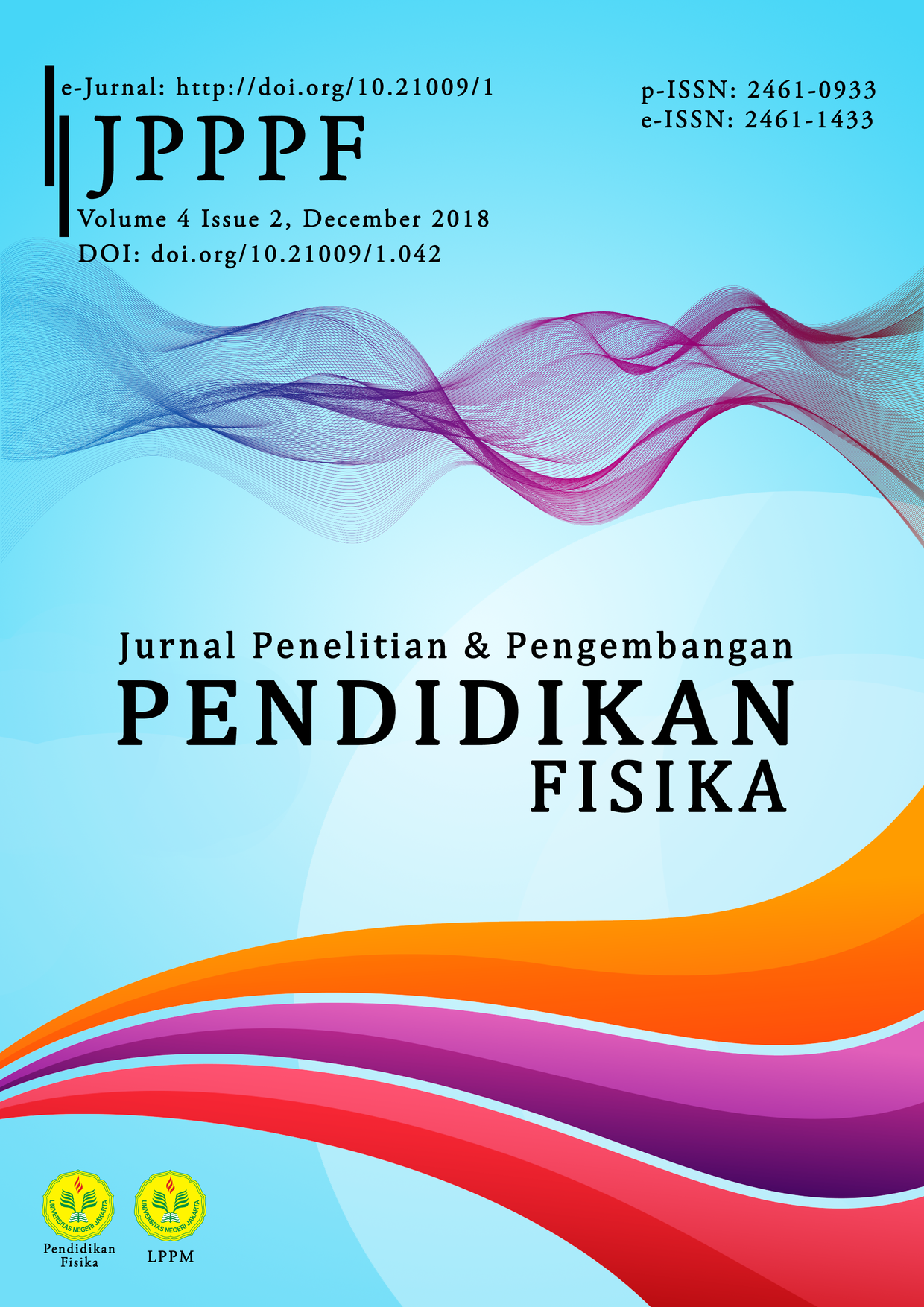E-Learning Model for Problem Based Learning on Heat and Thermodynamic Topics in High School
DOI:
https://doi.org/10.21009/1.04207Keywords:
e-learning, wordpress, problem based learning, heat and thermodynamicAbstract
The development of information and communication technology (ICT) in the 21st century makes it easier for students to be more active in the learning process. Physics learning materials are needed to support the problem-based learning process in high school. This study aims to produce e-learning models for problem-based learning on Heat and Thermodynamics topics. The result shows media can be used in learning in high school class XI. We uses the research and development method, with the Dick and Carey model. The study was conducted in a digital media laboratory, Physics Education Department of Universitas Negeri Jakarta from January to June 2018. E-Learning models have been produced for problem-based learning in the topic of Heat and Thermodynamics. This WordPress-based E-Learning model can display physics material enriched with images, graphics, animations, simulations, and videos. Students are facilitated to understand the concepts learned. The e-learning model is equipped with assessment tools that can be used online. Students are facilitated to learn independently without limited space and time. The E-learning model developed was also equipped with discussion groups in the form of chats for all registered users. The media validation obtained the results of system evaluation, content, and e-learning infrastructure with 78.9 points average. The material validation gives an 81.55 rating. Concerning media and material, e-learning media is declared feasible as a medium for self-learning. The e-learning model for problem-based learning is feasible to use to train the ability to critical thinking, creative thinking, collaborative, and communicate for students in high school.
References
Dick, W, Carey, L, Carey, JO 2015, The Systematic Design of Instruction, Pearson, Boston.
Harianto, I, Hidayat, A, Koes, S 2016, ‘Analisis Perencanaan Pembelajaran Guru Fisika SMA dalam Mengintegrasikan Keterampilan Berpikir Kreatif Siswa’, Pros Semnas Pend. IPA Pascasarjana UM, vol 1, pp. 301-307.
Haryono 2017, ‘Teknologi Pendidikan dan Pembelajaran Abad 21’, Prosiding Seminar Nasional Teknologi Pendidikan, pp. 425-436.
Husain, C 2014, ‘Pemanfaatan Teknologi Informasi dan Komunikasi dalam Pembelajaran di SMA Muhammadiyah Tarakan’, Jurnal Kebijakan dan Pengembangan Pendidikan, vol. 2, no. 2, pp. 184-192.
Leone, S, Spindler, A, Norrie, MC, McLeod, D 2013, ‘Integrating Component-Based Web Engineering Into Content management System. Springer-Verlag Berlin Heidelberg’, ICWE LNCS vol. 7977, pp. 37-51.
Nugraheni, E 2009, ‘Peran dan Kompetensi Guru dalam E-Learning’, Jurnal Pendidikan, vol. 10, no. 2, pp. 95-104.
Papachristos, E, Avouris, N 2013, ‘The Influence of Website Category on Aesthetic Preferences’, IFIP International federation for Information Processing, INTERACT, part.1 LNCS, vol.8117.
Rahmayanti 2015, ‘Penggunaan Media IT dalam Pembelajaran’, Jurnal Ilmiah CIRCUIT, vol. 1, no. 1, pp. 85-97.
Sani, RA 2014, Pembelajaran Saintifik untuk Implementasi Kurikulum 2013, Bumi Aksara, Jakarta.
Silahuddin 2015, ‘Penerapan E-Learning dalam Inovasi Pendidikan’, Jurnal Ilmiah CIRCUIT, vol. 1, no. 1, pp. 48-59.
Sudaryono 2016, Metode Penelitian Pendidikan: Pendekatan Kuantitatif, Kualitatif, dan R&D, Alfabeta, Bandung.
Taylor, MJ 2002, ‘A User Centered Website Development Approach’, IFIP International federation or Information Processing.
Trisnaningsih, S 2016, ‘Pengembangan E-learning Management System Quipper School pada Pembelajaran Materi Sistem Pertahanan Tubuh untuk Meningkatkan Motivasi dan Hasil Belajar Siswa Kelas XI di SMA Negeri 3 Yogyakarta’, Jurnal Pendidikan Biologi, vol. 5, no. 6, pp. 28-36.
Wijaya, EY, Sudjimat, DA, Nyoto, A 2016, ‘Transformasi Pendidikan Abad 21 Sebagai Tuntutan Pengembangan Sumber Daya manusia Di Era Global’, Prosiding Seminar Nasional Pendidikan Matematika, vol. 1, pp. 263-278.
Yadzi, M 2012, ‘E-learning Sebagai Media Pembelajaran Interaktif Berbasis Teknologi Informasi’, Jurnal Ilmiah Foristek, vol. 2, no.1, pp. 143-152.
Zubaidah, S 2016, ‘Keterampilan Abad Ke-21: Keterampilan yang Diajarkan Melalui Pembelajaran’, Seminar Nasional Pendidikan Biologi STKIP Persada Khatulistiwa Sintang, pp. 1-17.











